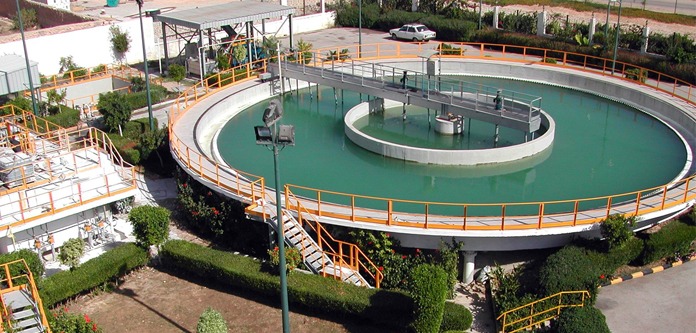Common Effluent Treatment Plant
The Common Effluent treatment plants are an important part of any industry that produces wastewater. By treating effluent before it is discharged into the environment, industries can help protect local water supplies and reduce pollution. There are many different types of effluent treatment plants, each designed to treat different types of effluent.
The most common type of effluent treatment plant is the activated sludge plant. Other types of effluent treatment plants include trickling filters, rotating biological contactors, and sequencing batch reactors. Industries that produce high levels of wastewater, such as food processing and textile manufacturing, often have their own on-site effluent treatment plants. These plants are designed to remove impurities from the water before it is discharged into the sewer system or released into the environment.
The scheme was introduced by the Ministry of Environment,
Forest and Climate Change (MoEF&CC) to provide a central effluent treatment facility in highly polluting industries where it is not economically viable for individual units to install their Effluent Treatment Plants (ETPs).
The scheme is being implemented through the Central Pollution Control Board (CPCB) as the Nodal Agency, and the Common Effluent Treatment are being set up and operated by industries themselves or through third-party service providers.
Industries located in identified pollution hot spots are required to mandatorily treat their effluents before discharge into the environment. The treated effluent from can either be used for irrigation or other purposes, or it can be discharged into a water body after meeting the prescribed standards.-CETP: Everything You Need
CETP Plant
A CETP is a treatment facility for the waste water of small and medium scale industries which do not have their own Effluent Treatment Plants. The CETP typically consists of a number of primary treatment units followed by a common secondary treatment unit. The treated effluent is then discharged into receiving water bodies such as rivers, lakes or the sea.
The CETP concept was first introduced in developed countries in the 1970s and 1980s as a means of minimizing environmental pollution from industries. The CETP approach has several advantages over individual Effluent Treatment Plants (ETPs) including:
– Reduced costs for small and medium industries due to economies of scale
– Better quality effluent due to improved technology and increased operator expertise
– Reduced environmental impact due to better effluent quality
What is a Common Effluent Treatment Plant?
It also known as a CETP, is a treatment facility that is used to treat effluent from multiple industries. The effluent is treated in a single unit and then discharged into the environment.
A CETP typically consists of a primary treatment unit, a secondary treatment unit, and a tertiary treatment unit. The primary treatment unit removes any large solids from the effluent. The secondary treatment unit removes any small solids and organic matter from the effluent. The tertiary treatment unit removes any remaining impurities from the effluent.
The effluent from a CETP must meet all environmental regulations before it is discharged into the environment.
Despite these advantages, CETPs have some disadvantages including:
– Difficulty in regulating discharge from multiple industries leading to variable effluent quality
– Poorly operated CETPs can lead to environmental pollution problems
– Capital costs can be high for larger CETPs
How Does a CETP Work?
CETPs are designed to treat effluent from domestic, commercial and industrial sources before it is discharged into the environment. The effluent is first treated in a primary sedimentation tank where heavy solids are removed. The primary treated effluent then flows to a secondary treatment system where it is further treated before being discharged.
Secondary treatment of CETP effluent typically includes biological processes such as activated sludge or Trickling Filter systems. In these systems, bacteria break down organic matter in the wastewater. The treated effluent is then discharged into receiving waters or reused for irrigation or other purposes.
What is a CETP?
A common effluent treatment plant is a wastewater treatment facility that receives and treats effluent from multiple sources. The effluent is typically transported to the plant through a shared pipeline system. This plants are often used in industrial parks or other areas where multiple businesses discharge their wastewater to a shared system.
The most common type of treatment plant is a activated sludge plant. In an activated sludge plant, the effluent is mixed with microorganisms that break down the pollutants in the water. The treated effluent is then discharged to a receiving water body such as a river or lake.
How does a common effluent treatment plant work?
A common effluent treatment plant (CETP) is a waste water treatment facility that treats the sewage and industrial effluent from several different industries. The treated effluent is then discharged into receiving waters.
The CETP concept was first introduced in India in the early 1970s as a way to treat the large volume of wastewater generated by the growing number of industries in the country.
Industrial wastewater typically contains a mixture of pollutants, including heavy metals, organic compounds, and suspended solids. Treating this type of wastewater can be challenging, as each pollutant must be removed using a different process.
Physical processes involve separating pollutants
from the water using physical means such as filtration or sedimentation. Chemical processes use chemicals to remove pollutants from the water. Biological processes use living organisms to break down or remove pollutants from the water.
CETPs are designed to treat a wide range of pollutants, but they are not perfect. Some CETPs have been criticized for their high operating costs and for their negative impact on the environment.
What are the benefits of a common effluent treatment plant?
A common effluent treatment plant is a sewage treatment plant that treats the waste water from several different industries. This type of plant is usually designed to handle a large volume of waste water and to recycle it for use in other industries. The main benefits of a treatment plant are its ability to save water, reuse water, and protect the environment.
Another benefit of a common effluent treatment is its ability to save water. Wastewater from different industries often contains a lot of water that can be reused. For example, treated wastewater from a textile factory can be used in agriculture or for irrigation. This helps to conserve our natural resources and to save money on water bills.
How much does a common effluent treatment plant cost?
A common effluent treatment plant treats effluent from many different industries before it is discharged into the environment. The cost of setting up and running a treatment plant depends on many factors, including the size of the plant, the type of industries it serves, and the environmental regulations in place.
Industry experts estimate that the cost of setting up a small common effluent plant ranges from Rs. 10 lakhs to Rs. 20 lakhs (1-2 million US dollars). Larger plants can cost upwards of Rs. 100 lakhs (10 million US dollars). Operating costs for a plant vary depending on the size and type of plant, but typically range from Rs. 1 lakh to Rs. 5 lakhs per month (10,000-50,000 US dollars).
Conclusion
The CETP is a common effluent treatment plant that removes pollutants from wastewater before it is discharged into the environment. It is important to have a CETP in place to protect our water resources and the environment.
Also Visit: idealnewstime.com



